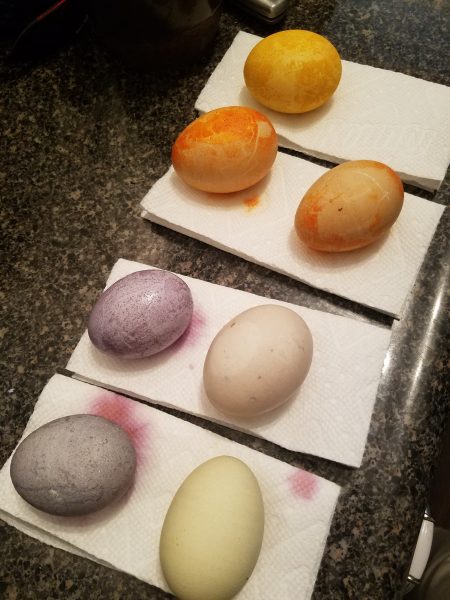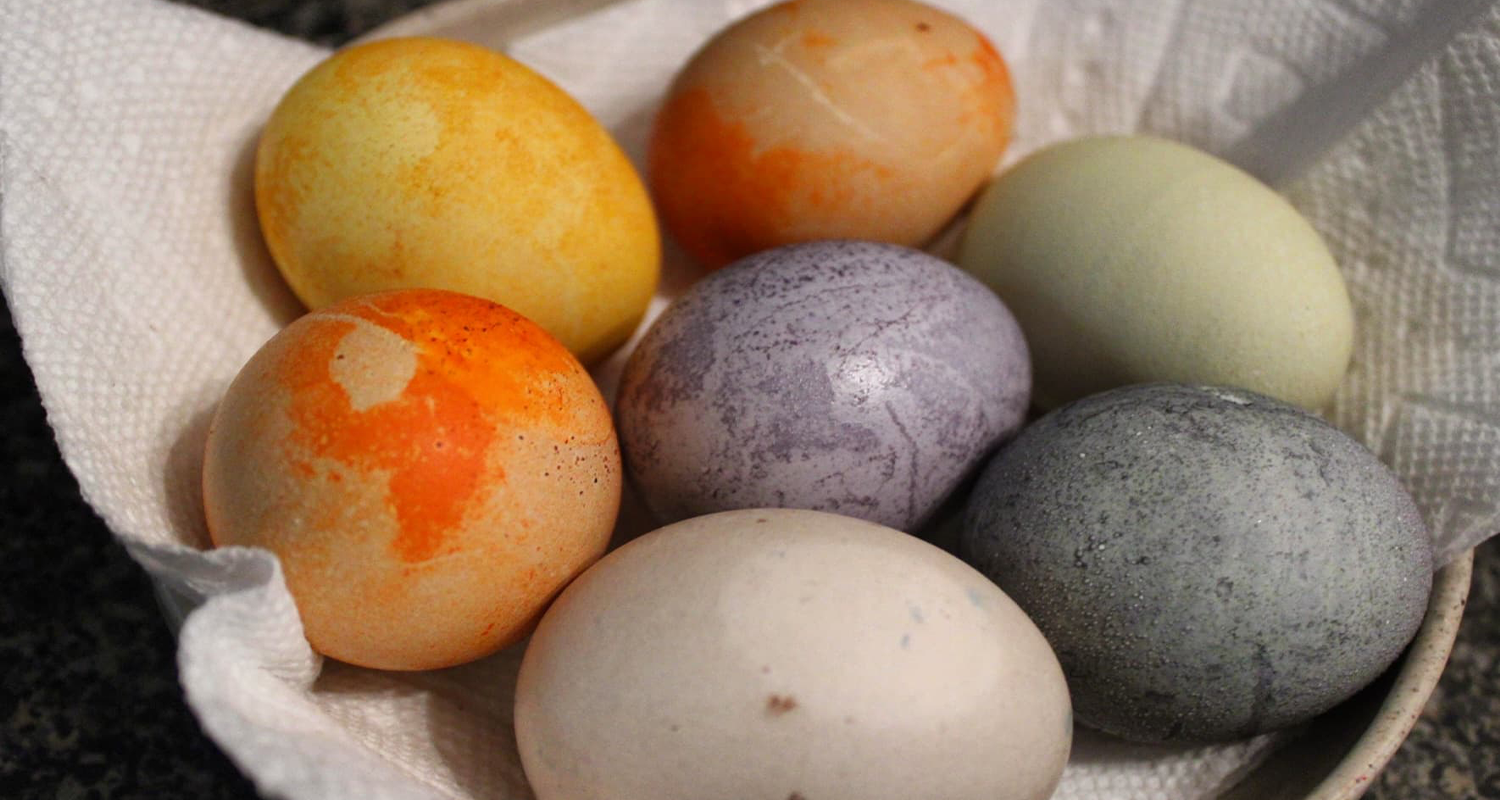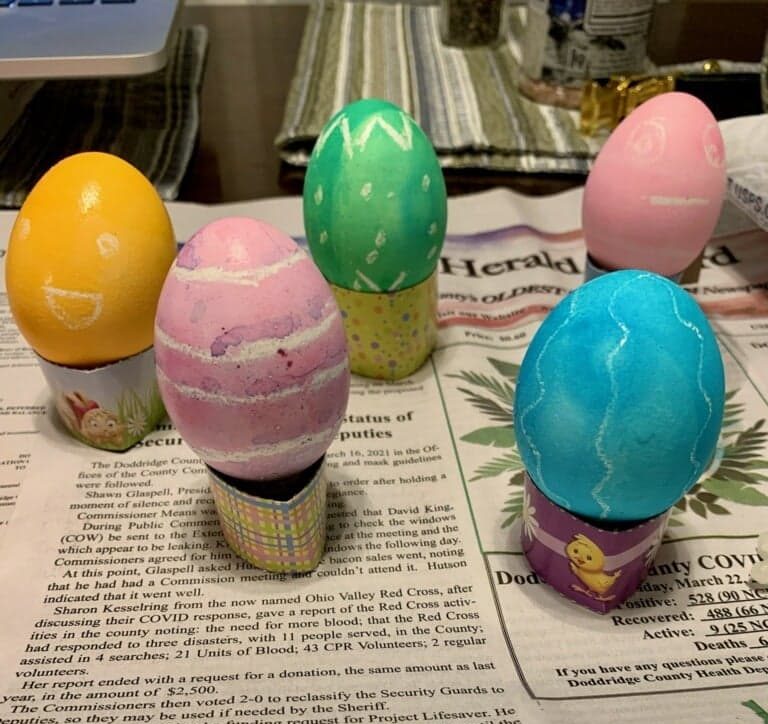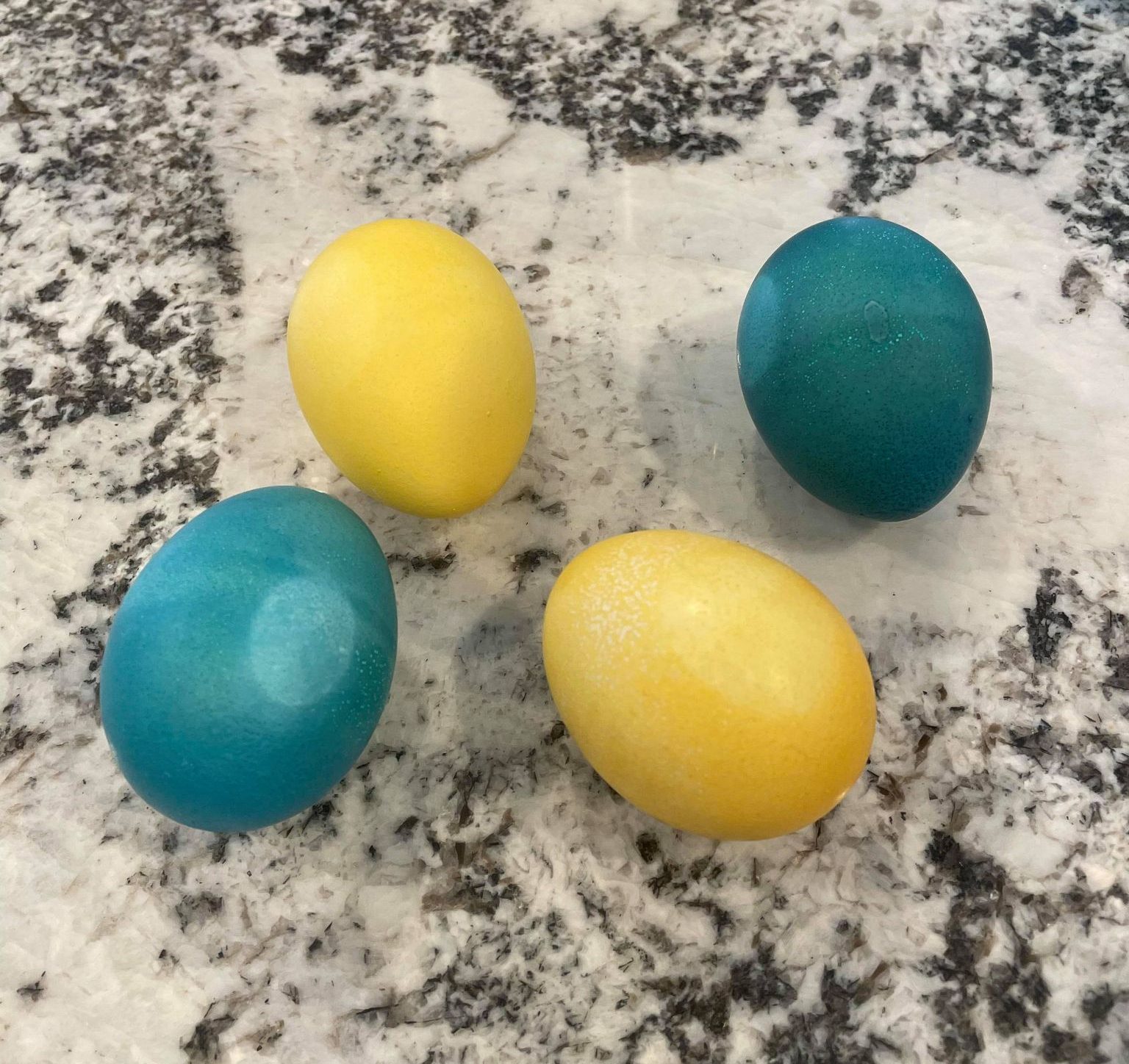Like many traditions we grow up with, we often keep them going every year without stopping to ask “why do we do this?” Decorating Easter eggs is one of those traditions for me. I look forward to decorating eggs with my family each year but have never put much thought into the origins of the tradition.
A simple version of this tradition’s history dates back to the 13th century when dyed eggs were given as gifts to lords and to the church as a special Good Friday offering. Eggs were commonly dyed red to signify joy. The tradition evolved in the late 19th and 20th centuries to include children, as many holidays became more family-friendly and geared toward kids. This is when colorful egg-dying, the Easter bunny, and egg hunts became popular.1
Today, grocery store aisles are lined with several options for creating colorful eggs. You can go with a classic kit with bright blues, oranges, and pinks, or you can find kits that help you create special glitter eggs, tye-dye eggs, and even colorful golden eggs. If you prefer to use natural products, or don’t have time to head to the store, you can create beautiful Easter eggs with a few common kitchen staples.
Local resident Brianna Hickman recently hosted a virtual egg-dying party with some of her friends as a way to connect and celebrate the season. “We usually meet up for several occasions throughout the year, and COVID has taken that away from us,” said Hickman. “We’ve been ‘meeting’ on Google Hangouts for the last year to have trivia night, secret Santa, board game night, and now egg-dying night.”
While this was a new type of hangout for Hickman’s friend group, dying eggs was a family tradition for many of them. “We all talked about how we dyed eggs as kids, but none of us had dyed them since we graduated from college. We actually talked about how all of our moms boiled the eggs and took care of all the details for us. So it was new to us as a group, but we had all dyed eggs with our families growing up.”
Instead of reaching for a traditional dye kit at the store, Hickman and her friends got creative by trying out natural dyes for their eggs. “When I asked everyone if they were interested, I immediately thought, ‘shoot, I don’t want to buy an egg kit.’ So I looked up ‘homemade egg dying’ and sifted through recipes until I found some I liked,” said Hickman. “This is the first time I’ve used natural dyes. I made it a personal goal a couple of years ago to be more sustainable and less wasteful, so I’ll probably do natural dyes for future egg-dying, too, because almost everything I needed was already in my spice cabinet.”
If you’re interested in trying naturally dyed eggs this year, Hickman suggests that you go with the flow and enjoy the process. “Don’t be discouraged if your eggs don’t look exactly like you imagined or something doesn’t work. I originally tried to dye an egg green using spinach, and absolutely nothing happened. The same happened with my red cabbage, which was supposed to turn an egg bright blue. Instead, I just mixed some leftover water together and came up with some new colors. It’s all experimental, and it’s exciting to see what actually comes out of the bowls.”
If you haven’t had a chance to color eggs for Easter yet, Hickman has shared her recipe for naturally dyed eggs. If you’d like a little guidance before you get started, Grow Ohio Valley is hosting a natural dye demonstration today (Friday, April 2) at the Public Market from 3 – 6 pm. They’ll be there to show you what colors you can produce using natural, food-based dyes. You can even pick up all the ingredients you need to try it at home.

Naturally Dyed Easter Egg Recipes
Start by making a batch of hard-boiled eggs. Next, prepare your natural dyes in containers large enough to hold the eggs. Place the hardboiled eggs in the dye solution for at least one hour, or as long as you’d like. The longer the eggs stay in the dye, the more vibrant your eggs will be.
Try out these natural dyes below, or make up your own based on what you have in the kitchen:
Mustard yellow
-
- 2 Tbsp. turmeric
- 1 Tbsp. vinegar
- 1 cup boiling water
Lavender
-
- 1 cup grape juice
- 1 Tbsp. vinegar
- 1 cup boiling water
Orange
-
- 2 Tbsp. paprika
- 1 Tbsp. vinegar
- 1 cup boiling water
Brown orange
-
- 2 Tbsp. chili powder
- 1 Tbsp. vinegar
- 1 cup boiling water
Grayish blue
-
- 1 cup frozen blueberries
- 2 Tbsp. vinegar
- 1 cup boiling water
Green
-
- 1 cup red cabbage water (¼ head of red cabbage boiled with 4 cups water and 2 Tbsp. vinegar)
- Leftover turmeric water from the mustard yellow mix
Gray
-
- Leftover grape juice water from the lavender mix
- Leftover chili powder water from the brown-orange mix
Happy Easter!
Source:
1 “Here’s Why Easter Eggs Are a Thing,” Time, April 14, 201, accessed April 1, 2021, https://time.com/4732984/easter-eggs-history-origins/





